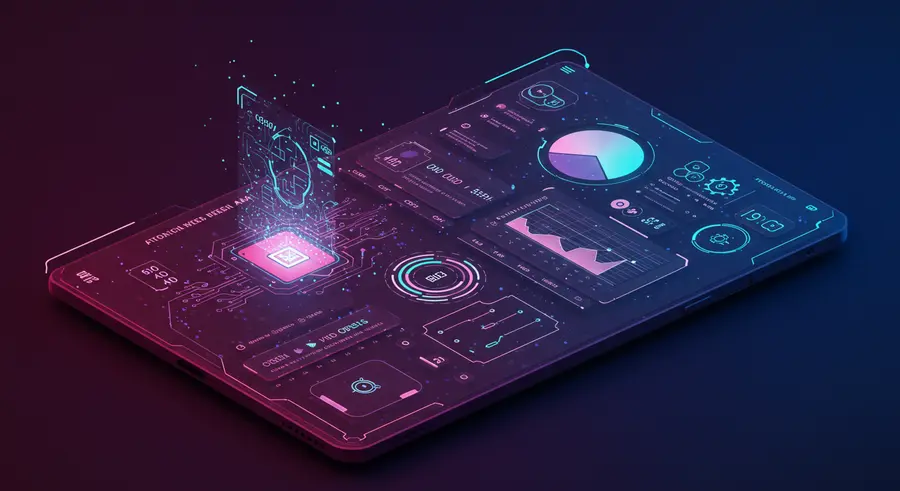Appearance

Hello, tech explorers! 👋 Today, we're diving deep into the fascinating evolution of Progressive Web Apps (PWAs) and how the integration of Artificial Intelligence (AI) is poised to redefine our digital experiences. If you've been following the web development landscape, you know PWAs have already revolutionized how we think about web applications, bridging the gap between web and native. But what happens when we infuse them with the intelligence of AI? Let's uncover the exciting possibilities!
🚀 PWAs: A Quick Recap
Before we leap into the future, let's briefly recall why PWAs became such a game-changer. Introduced by Google, PWAs offer:
- Reliability: Thanks to Service Workers, they can work offline or on low-quality networks.
- Speed: Cached assets and optimized loading ensure lightning-fast performance.
- Engagement: Features like push notifications and add-to-home-screen capabilities foster deeper user engagement.
- Native-like Feel: They offer an app-like experience directly from the browser, without the need for app store downloads.
For a foundational understanding, you can revisit our earlier article on The Power of Progressive Web Apps (PWAs).
🧠 The Dawn of AI in PWAs
The intersection of PWAs and AI is not just a buzzword; it's a paradigm shift. AI can elevate PWAs from merely being "app-like" to becoming truly intelligent, personalized, and proactive. Here are some key areas where AI will play a pivotal role:
1. Personalized User Experiences 🎯
Imagine a PWA that learns your preferences, predicts your needs, and tailors content and functionality accordingly. AI algorithms can analyze user behavior, location, and historical data to:
- Dynamic Content Delivery: Display content most relevant to the user, enhancing engagement.
- Intelligent Recommendations: Suggest products, services, or information based on past interactions.
- Adaptive Interfaces: Adjust the UI/UX in real-time to optimize for individual user preferences and accessibility needs.
For example, an e-commerce PWA could use AI to recommend products based on browsing history, even anticipating what you might need before you search for it.
2. Enhanced Offline Capabilities with Predictive Caching 🌐
While Service Workers provide robust offline access, AI can make it smarter. Predictive caching, powered by AI, can anticipate what content a user might need next and pre-fetch it, even before they explicitly request it.
- Scenario: A news PWA observes a user frequently reads articles on "Artificial Intelligence" and "Space Exploration." AI can predict that the user will likely read new articles on these topics and pre-load them, ensuring instant access even when offline.
3. AI-Powered Push Notifications and Engagement 🔔
Push notifications are already a powerful PWA feature, but AI can make them far more effective by:
- Optimizing Timing: Sending notifications when a user is most likely to engage, based on their activity patterns.
- Personalized Messaging: Crafting notification content that is highly relevant to the individual user.
- Sentiment Analysis: Understanding user sentiment from their interactions to refine communication strategies.
This moves beyond generic alerts to genuinely valuable and timely communications.
4. Advanced Search and Voice Interfaces 🗣️
AI can significantly enhance the search capabilities within PWAs, moving towards natural language processing (NLP) and voice-activated interfaces.
- Conversational AI: Users can interact with the PWA using natural language, similar to conversing with a human.
- Smart Search: AI can understand context and intent, providing more accurate and relevant search results even with vague queries.
- Voice Commands: Enabling hands-free interaction, making PWAs more accessible and convenient.
5. Performance Optimization and Resource Management ⚡
AI can continuously monitor PWA performance and optimize resource allocation in real-time.
- Resource Prediction: AI can predict peak usage times and scale resources accordingly to maintain optimal performance.
- Anomaly Detection: Identify and flag performance bottlenecks or security threats before they impact the user experience.
- Battery Optimization: Intelligently manage background processes and resource usage to extend device battery life.
6. Bridging Web and Native: Hardware Integration 📱
AI can facilitate deeper and more intelligent integration with device hardware, pushing PWAs even closer to native app capabilities.
- Camera and Microphone: AI can process real-time audio and video streams for features like augmented reality (AR) experiences or intelligent voice assistants directly within the PWA.
- Sensors: Leveraging data from accelerometers, gyroscopes, and other sensors for more immersive and context-aware applications.
🌟 The Future is Intelligent and Seamless
The integration of AI into Progressive Web Apps promises a future where web experiences are not just accessible and fast, but also intelligent, personalized, and seamlessly integrated into our daily lives. As AI technologies mature and web capabilities expand, we can expect PWAs to become even more indispensable, offering rich, dynamic, and intuitive interactions that blur the lines between traditional websites and native applications.
The journey of PWAs is far from over; it's just getting smarter! Stay tuned for more insights as we continue to explore the cutting edge of web technology.